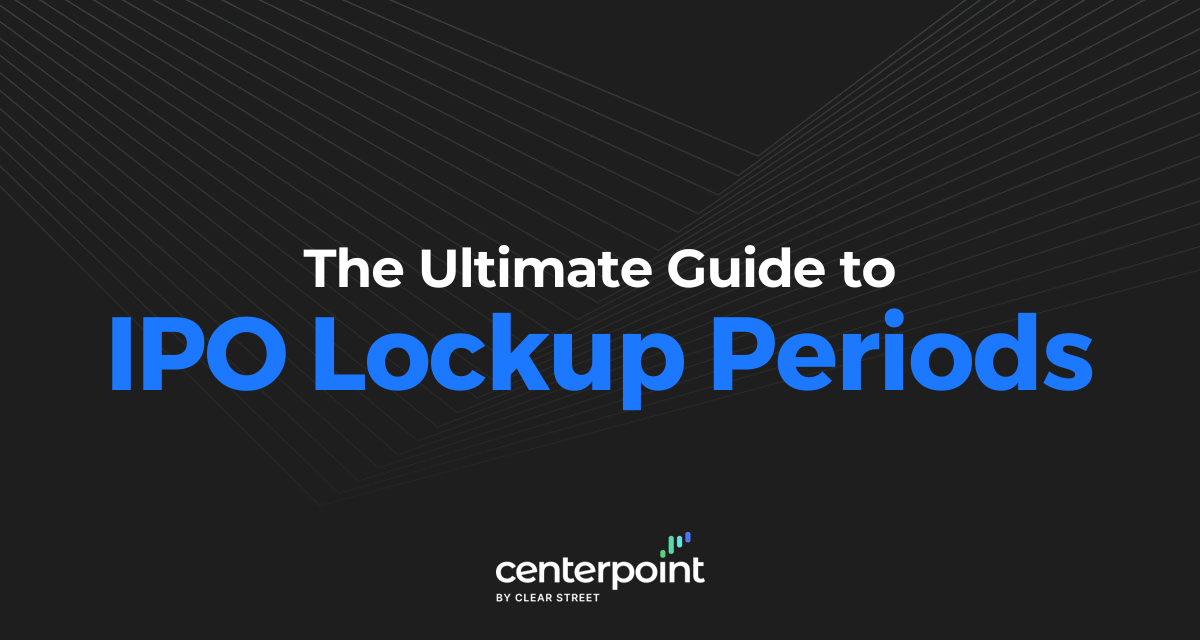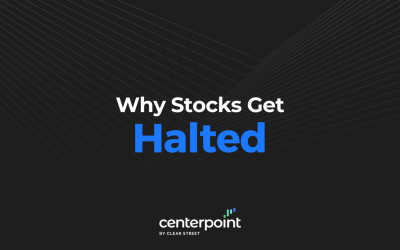An IPO is one of the most exciting events in the life of a growing company. It can also be an exciting event for traders. Not only does an IPO introduce a new stock to the public markets, but it also brings with it an IPO lockup period that can present opportunities for trading.
In this guide, we’ll explain what an IPO lockup period is and how you can trade around it.
What is an IPO?
An IPO, or initial public offering, is the process by which a private company sells shares on public stock markets for the first time. Before an IPO, ownership in a company is limited to a small group of insiders, venture capitalists, and other professional investors. After an IPO, ownership is available to any investor through public stock exchanges.

During an IPO, a company issues new shares that will be sold to raise capital. These shares are typically sold to an investment bank at a predetermined price. This process is known as underwriting, since the investment bank puts up the money to buy the shares upfront, thus guaranteeing the company going public a certain amount of capital. The investment bank then sells the shares on a stock exchange at the time of the IPO.
What is an IPO Lockup Period?
On the day of an IPO, all or nearly all of the shares available to the public are newly issued shares. In most cases, existing shareholders – venture capitalists, company insiders, and employees – are restricted from selling their shares (or face limits on the number of shares they can sell).
These restrictions are part of what’s known as the IPO lockup period. During the IPO lockup period, insiders are barred from selling their shares. Shares that were released to the public on the day of the IPO can trade freely, but insiders cannot sell into the public markets.

The IPO lockup period is designed to prevent insiders from selling huge numbers of shares during or immediately after an IPO. Such selling could flood the market with shares, driving down their price. Notably, an IPO lockup period is not required by the SEC (Securities and Exchange Commission), but rather is imposed by the company itself or by the investment bank that underwrites the IPO.
How Long is the IPO Lockup Period?
An IPO lockup period typically lasts 90-180 days. There is no standardized length of time.
Traders and investors can find out how long a company’s IPO lockup period will be in its S-1 filing, which is the same filing that describes the IPO and share offering. Any changes to the lockup period will be documented in an S-1A filing.
What Happens After the IPO Lockup Period?
Once the IPO lockup period ends, insiders are allowed to sell their shares with few or no restrictions. Typically, this leads to a wave of selling activity – at the end of an IPO lockup period, most stocks experience a prolonged price drop of 1-3%.
However, the magnitude of selling pressure at the end of the IPO lockup period varies from company to company. If the stock price is lower than the IPO price due to negative news around the company, insiders may be incentivized to hold onto their shares and sell at a later date. If the stock price is high, insiders may be impatient to sell.

How eager insiders are to sell also depends on how long the company took to reach an IPO from when it was founded, what portion of shares are held by founders versus venture capitalists, and other factors.
Trading around the End of an IPO Lockup Period
Trading around the end of an IPO lockup period can be tricky since it’s difficult to know how eager insiders will be to sell. Shorting the stock might seem like an obvious strategy, but it’s important to remember that the market expects selling pressure at the end of a company’s IPO lockup period. So, the price can drop in the days leading up to the lockup expiration.
To get an indication of where a stock might be headed after an IPO lockup expires, look carefully at which insiders are selling and how much of their holdings they are selling. If institutional investors are selling large tranches of stock, it could be a sign that they don’t have much faith in the company going forward.
On the other hand, if selling is mainly coming from the founding team or early investors, these sales could simply represent individuals looking to cash out after years of holding wealth on paper only. This type of selling doesn’t necessarily reflect anxiety about the company’s future.
Conclusion
An IPO lockup period is the period following an IPO when insiders are restricted from selling their shares. After an IPO lockup ends, insiders are allowed to sell, and they often do – which can drive down the price of a stock by several percent.
Traders can use the end of an IPO lockup period as a trading opportunity. However, it’s important to remember that the market often prices in selling activity around this event.







